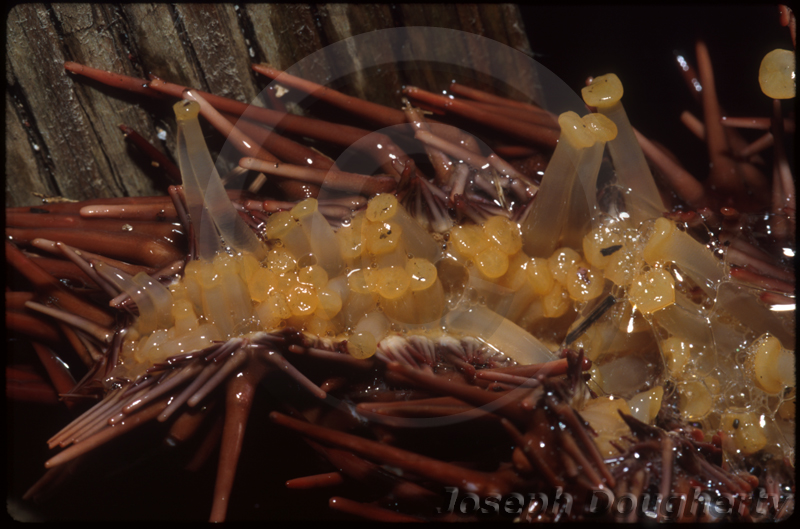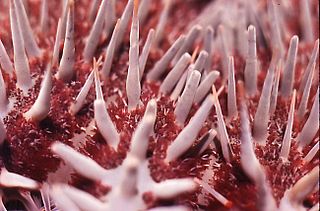Adaptation
Movement:
•Water vascular system: a collection of hydrostatic
structures used in association with their fluid filled cavities
(coelom) and tube feet to help circulate water through their
bodies and aid in movement across the substrate. They also utilize a
special opening located on the anterior side of the central disc
called a madreporite, which is used to intake water for the
water vascular system.

Acanthaster planci tube feet.
Image courtesy of Joseph Dougherty, M.D./ecology.org
Protection:
•Spines: elongated spines for increased protection and also
contains venoms such as saponins and plancitoxin I.
•Ossicles: the spiny plates on the endoskeleton composed of
calcium carbonate. They can combine to form a lattice which
increases strength, reduces weight, and can even act as
camouflage.

Acanthaster planci spines (left) and Acanthaster
planci wrapped around coral (right).
Utility:
•Gas exchange: Acanthaster planci relies on
diffusion across the surface of their body to exchange gas. This
can be one reason why Acanthaster planci, as well as
other starfish species, can grow so big to increase their
surface area to allow for more gas exchange. Oxygen is acquired
through the tube feet when water passes over them.
-Tube feet: used in mobility (water
vascular system) and gas exchange.
•All starfish have the ability to regenerate lost limbs as
long as the central disc remains intact.
•Pedicellariae: these clamp-like structures are used to help
keep debris, such as algae, off the surface of the starfish.
Image taken from Wikipedia. Author: Philippe Bourjon.
Excretory system: The mouth is located on the ventral side (bottom) of the starfish and the anus is located on the dorsal (top) side. Food is absorbed through the stomach by a process called eversion (see Nutrition). Acanthaster planci releases waste through the anus.
The dorsal side of a Crown-of-Thorns starfish (left) and another
Crown-of-Thorns starfish (right) feeding on coral.
Sensory: Starfish lack a centralized brain but make up for it with clusters of nervous tissues known as ganglia located throughout the body. A cluster of ganglia can be seen on Acanthaster planci which appear to look like eyespots. These eyespots are used to detect changes in light and darkness.
Now take a look at what makes this species so dangerous: Venom
.jpg)